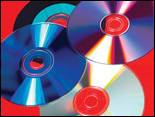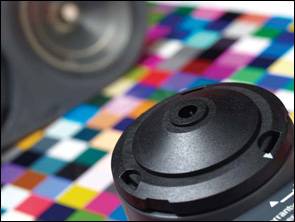Setting Up the Digital Workstation
| Using Photoshop for food photography requires a powerful computer setup. While this involves a substantial original investment, you'll enjoy a significant paybackprimarily by eliminating film and processing costs, and by reducing the amount of time spent in retouching. In particular, you need a calibrated workstation to view and process your images correctly. In fact, a busy studio may need multiple workstations to retouch, print, and archive finished pictures on CDs, DVDs, and external hard drives. Note Until recently, archiving digital images on CDs was the preferred method of storage. Now, DVDswhich store anywhere from 4.7 to 17 gigabytes (GB) of information depending on the type of diskare becoming more popular because they can store as much as 25 times more data than CDs. In addition, DVDs provide more data protection than CDs because the reflective coating is sandwiched between two polycarbonate layers, which protect the media from scratches. DVDs are also faster than CDs for data access. Professionals should have redundant systems (RAID) to archive their images. RAID (Redundant Array of Independent Disks) is a group of storage devices and disk drivessuch as magnetic tape, hard drives, and optical drivesthat operate as a single unit. This technology provides a high level of data security because if one of the storage units in a group fails, data can be transferred to other units in the system. How elaborate your computer setup is depends on the quantity of pictures you take and the file sizes. Tip Do not leave your CDs and DVDs in bright light or warm environments. They might warp, which can cause errors in data transfer. Because these disks are optical storage devices, bright light can cause damage, which affects the data. The type of computer equipment you buy will depend largely on your budget. Regardless of budget, however, you'll need the following:
Tip When setting up your work area, make it a point to keep wires coiled and behind the desktop, and to keep metal objects away from the monitor. (If metal objects are placed near the screen, the magnetic field around the monitor will be affected, and this can cause a color shift in certain parts of the screen.) System Requirements: Low BudgetIf your budget is low, limit your computer-related purchases to the following:
Tip If you can swing it, upgrade to 2GB RAM. Your high-res photos will open more quickly. System Requirements: Medium BudgetIf you have a medium-sized budget, you can upgrade your computer-related purchases as follows:
System Requirements: High BudgetIf you have a big budget, the sky is the limit. Look into purchasing the following:
Tip When using Photoshop, display the tools in one monitor and a full screen of the image you're working on in the other monitor.
Note Avoid eating and drinking while operating your computer. Accidents do happen! Calibrating Your MonitorWYSIWYG (What You See Is What You Get) is not always the case with digital image files. That's because all computer monitors, like color TVs, have different color profiles. Basically, they represent the same colors differently. Nowhere is this is more evident than when you walk into a home electronics store and see a wall of TVs on the same channel; they all appear different, with certain sets adjusted improperly. Compounding the problem is the fact that there are various types of monitors availableregular CRT monitors, laptop monitors, LCD monitors, and so onand viewing angle varies among them. Your computer monitor is your window to what the final image will look like. You must be able to trust what you see on the screen. The only way to do this is to obtain a calibration device that assesses accurately, and software that creates a profile that renders proper color. Calibration should be achieved with a colorimeter, or spyder, as they're called, not by your eye. These instruments perform a mathematical assessment of the monitor color output for true accuracy. There are many calibration software packages and devices available. Tip It is important to calibrate monitors frequentlyat very least once a month. They do have a tendency to shift colors and brightness levels. |




